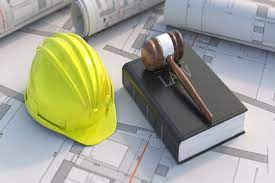What are the Seven Types of Construction?
Introduction
Construction is an essential part of any society. From residential and commercial buildings to roads, bridges, and tunnels, construction is a significant component of any infrastructure. However, there are various types of construction, each with its unique characteristics, materials, and techniques. Understanding these types of construction is crucial for ensuring the safety and efficiency of any building project. In this article, we will discuss the seven types of construction.

Type 1: Residential Construction
Residential construction involves building homes, apartments, and other types of residential structures. This type of construction usually involves wood framing, brick, and concrete materials, and techniques such as slab-on-grade and crawl space foundations. Residential construction can be further divided into single-family and multi-family construction.
Single-family construction is the most common type of residential construction, and it involves building one home on a lot. Multi-family construction involves building several homes, such as apartments or townhouses, on a single lot.
Type 2: Commercial Construction
Commercial construction involves building structures for businesses and organizations. This type of construction includes buildings such as offices, schools, hospitals, and shopping centers. Commercial construction requires more specialized materials and techniques, such as steel framing and reinforced concrete.
The design of commercial buildings also requires consideration of factors such as accessibility, ventilation, and fire safety. Commercial construction projects typically involve a team of architects, engineers, and construction workers.
Type 3: Heavy Civil Construction
Heavy civil construction involves building infrastructure projects such as bridges, tunnels, and highways. This type of construction requires specialized equipment and materials, including cranes, bulldozers, and excavators. Heavy civil construction projects also require extensive planning and preparation to ensure the safety of workers and the public.
Type 4: Industrial Construction
Industrial construction involves building facilities such as factories, power plants, and warehouses. This type of construction requires specialized materials and techniques, such as steel framing and reinforced concrete. Industrial construction projects also require considerations for factors such as ventilation, environmental impact, and safety regulations.

Type 5: Environmental Construction
Environmental construction involves building structures that protect the environment or mitigate its impact. This type of construction includes projects such as dams, levees, and water treatment facilities. Environmental construction requires specialized materials and techniques, including soil stabilization and erosion control.
Type 6: Institutional and Cultural Construction
Institutional and cultural construction involves building structures such as museums, government buildings, and religious institutions. This type of construction requires considerations for factors such as aesthetics, accessibility, and cultural significance. Institutional and cultural construction projects also require specialized materials and techniques, such as masonry and ornamental metalwork.
Type 7: Military Construction
Military construction involves building structures for military use, such as barracks, training facilities, and airfields. This type of construction requires considerations for factors such as security, durability, and functionality. Military construction projects also require specialized materials and techniques, such as blast-resistant materials and air filtration systems.
Conclusion
In conclusion, understanding the seven types of construction is crucial for anyone involved in the construction industry. Each type of construction requires unique materials, techniques, and considerations for factors such as safety, accessibility, and environmental impact. Whether building a residential home or a military barracks, it is essential to ensure that the construction project is planned and executed with precision to ensure its success. Click here for more information.
